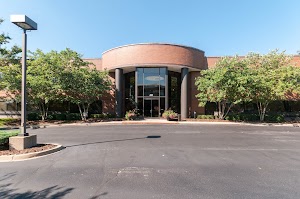What’s the Desmond Difference? Part of it is that I limit my legal practice to only car accidents and motorcycle wrecks. Since 2005, I have had my own injury firm that has handled a lot of motorcycle wrecks, involving both small and large injuries. Below is an example of a complicated motorcycle wreck, involving a serious injury, to illustrate the complexities of personal injury law.I have separated the issues into separate sections and pages for easy access but, these facts will apply to every section.
Elements Of A Personal Injury Claim Arising From A Motorcycle Crash
My client, Mary, was a passenger when a motorcycle wreck occurred, so we know she does not bear any fault in causing this motorcycle crash. There were potentially three motorcycle riders who could be at fault for this motorcycle accident, and I will call them Smith, Jones and Johnson. Mary suffered broken bones and had two surgeries, and at least two of the four people injured. Mary stayed in the hospital multiple days and had over $79,000 in medical bills in the first weeks following the motorcycle accident. It is worth noting that the value of Mary’s personal injury claim is not known until a client has completed all their treatment and you can review all of their medical records/bills. However, with Mary already having such a high amount of medical bills, it is fair statement to say that the value of her personal injury claim was already very high. But the real question was can I, as her person injury lawyer, find enough insurance to cover the full value of her pain and suffering claim.
Proving Fault In A Motorcycle Accident Claim
To recover on any personal injury claim, whether it is from a car crash or a motorcycle accident, we must show that a driver was at fault for the wreck, or to use the legal term, negligent. To prove negligence, we have to show four elements. First, the person had a legal duty as outlined in the law or statutes. When it comes to motorcycle riders, or the driver of any motor vehicle, one of the most basic duties is to keep their motorcycle under proper control at all times. That brings us to the second element of negligence, we have to show they breached that duty. The third element of negligence is that we have to show that breach caused damages. That’s the fourth element of negligence, damages. Those damages, include but are not limited to the lost wages, medical bills and pain and suffering of the injured motorcyclist. To put it all legally, we have to show negligence on the at-fault on another driver which means that we can demonstrate that the other driver breached a legal duty, and that breach was the cause of my client’s damages. That’s really the key element of a personal injury claims arising from a motorcycle wreck or car accident in Kentucky; showing the at-fault driver breached the law and that breached caused your damages, i.e. the damage to your motorcycle, your medical bills, your injuries, etc. Very simply, what we think happened in a motorcycle wreck is not important but rather, it is what we can prove, that is essential to recovering money damages on your injury claim.
Additionally, Kentucky is a pure comparative fault state which every injury lawyer must consider when evaluating pain and suffering claims arising from a motorcycle accident.The easiest way to understand comparative fault is to understand that you could be 95% at fault for a wreck and still recover 5% of your damages. So, the fact that you were the majority at fault for causing a motorcycle wreck, does not prevent you from recovering the damages you were not at fault for; that’s the essence of Kentucky being a pure comparative fault state. However, recall in my example, Mary was a passenger on a motorcycle and since she has no control over the steering of the motorcycle, she can’t be guilty of any comparative fault. Consequently, there is no basis for reducing her damages through comparative fault or claiming she did something wrong.
Steps To Investigating A Motorcycle Wreck
As a lawyer investing a motorcycle accident, my first step is to get a copy of the police report. I am able to do so online, just a couple of days after the date of the wreck. The police report is rather crucial to my investigation as it lists where the motorcycle wreck happened, the officer’s theory as to how the wreck happened and the drivers involved in the wreck. Moreover, it lists the insurance carriers for the at-fault drivers. This is essential because it allows me to open up liability claims against the at-fault driver, with their insurance company, as soon as I have the police report. This is why I constantly try to get the police report, for a car or motorcycle wreck, while I am on the phone with the client and before I have ever met with the injured victim.
Further, even though I my injury firm is small, I can use an investigator to immediately start collective evidence as to how the motorcycle crash occurred. If the motorcycle is registered in Kentucky, I can run that license plate with the County Clerk and find the insurance carrier for the last time theregistration of the at-fault vehicle was renewed.
We immediately start investigating the facts of the motorcycle wreck, by looking for video and talking to witnesses, to determine who was at fault for the crash. My investigator may go to the scene of the motorcycle wreck to look for skid marks and video of the actual, motorcycle crash through street cameras and security cameras used by local businesses. With the onset of Ring doorbells, it has become easier to find video that captures a car wreck or motorcycle accident. Several times over my career, finding such video has made the difference wherein an injury claim worth $0 dollars turned into a policy limits case based on the video we discovered.
Since we know the insurance companies for the at-fault driver(s), I will have opened an injury claim with each of them through a letter of representation.
Next Step
Now, proceed my page on the topic of my Letter of Representation to continue with my example and how it relates to Kentucky motorcycle accident claims.
Listen to Attorney Jim Desmond’s 2-part series about motorcycle accidents and insurance issues. Click here to listen to Episode 9.

Thanks Jim!


